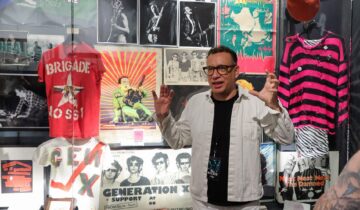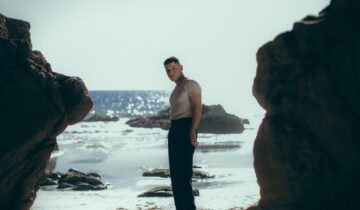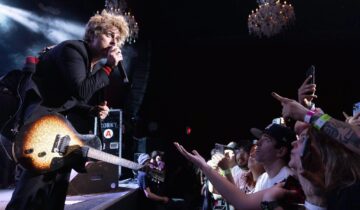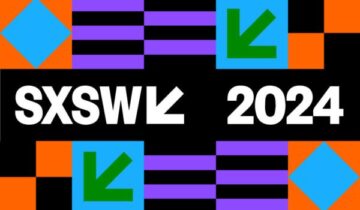 For SF WEEKLY: San Francisco jazz fans are relatively lucky: a handful of jazz clubs, such as the SFJAZZ Center and Yoshi’s in San Francisco and Oakland offer year-round jazz programming that includes big-name acts and up-and-coming talent from around the world. But tickets can be expensive, and with that ticket price comes higher expectations for a polished, high-caliber performance. But raw, live jazz performance happens here every week as well, in smaller, cheaper, darker venues where foot traffic is encouraged, and unrehearsed spontaneity is expected.
For SF WEEKLY: San Francisco jazz fans are relatively lucky: a handful of jazz clubs, such as the SFJAZZ Center and Yoshi’s in San Francisco and Oakland offer year-round jazz programming that includes big-name acts and up-and-coming talent from around the world. But tickets can be expensive, and with that ticket price comes higher expectations for a polished, high-caliber performance. But raw, live jazz performance happens here every week as well, in smaller, cheaper, darker venues where foot traffic is encouraged, and unrehearsed spontaneity is expected.
The phrase “jazz jam session” is a surefire turn-off for some, and not without reason: jam sessions can be unorganized, and sound quality can be dismal. Often, musicians seem less concerned with the audience and more concerned with each other; they solo endlessly in what can seem a competition rather than a controlled, collaborative musical dialog. Jams can go on forever and take on no real shape or form.
But jam sessions can also be revelatory. Musicians, free from the restraints of high-paid gigs, studio work, contract agreements, or rigid set lists, explore their instruments in ways during jazz jams that they may not have the opportunity to do elsewhere. Without a set list, good jazz players push each other to try new things musically, riff off of each other, and experiment. Jazz jams provide a platform for improvised musical conversation that is unique every time and cannot be duplicated.
Ultimately, session leaders and organizers largely determine just how a jazz jam session will unfold. There are several worth checking out.
Mondays at Biscuits and Blues, 401 Mason Street, S.F.
Band goes on at 7:30, jam starts by 9:30
Jazz Mafia’s Mike “The Hitman” Olmos plays a full set with his band and then opens it up for guest musicians. Expectations here are high, and so is the level of playing. Olmos runs a tight ship: he’s got a full weekly schedule of gigs working for other musicians, but Mondays are his night to do his thing. The general format is straight ahead jazz standards. “The main prerequisite is to have your shit together before you come up and play,” Olmos says. “This isn’t some random blues or funk jam with someone wanking on one chord for forever and not making any sense. This session is about community, not one person on their soapbox. It’s like, how well can this group play together?” The venue is shutting the session down at the end of this month — for financial reasons, Olmos says — so Olmos is looking for an alternate location. Catch the final sessions on Sept. 23 and 30.
The Layover, 1517 Franklin Street, Oakland
Wednesdays are “Oakadelic” night
This night leans more heavily on funk and blues than jazz, and guest MCs occasionally drop verses, but it’s a scene worth investigating. It takes a while for the session to heat up, but when it does, find a spot near the band and settle in. The vibe is more raw than what’s on deck at Biscuits and Blues: break-beat drummers take turns on the kit, and horn players quickly improvise melodies and harmonies and rip intricate solos while the crowd squeezes in to this somewhat long, narrow venue. The vibe can feel loose, but horn players aim to maintain a consistently high caliber of playing.
Wednesdays at Amnesia, 853 Valencia Street, S.F.
House band on at 10:45, jazz jam from roughly midnight to 1:30 a.m.
The Eric Garland Jazz Session here is like something out of a movie: a small, dark dive bar, and a small, high stage in the back. A spotlight shines on players as they rip through tunes. Cool-kids and drunkards fill out the crowd. Garland, a drummer, pushes musicians to play original music and arrangements rather than call too many standards. If someone has a book of great jazz music from the ’60s with lesser-known songs from Joe Henderson or Donald Byrd, Garland encourages musicians to play from it. He invites different musicians each week, and tries to foster a communal environment in which musicians can network with each other: his rock-meets-jazz-meets-groove band Klaxon Mutan All-Stars formed out of one of his jazz jam lineups. “There’s something unique about a jazz session,” Garland says. “When you play, you let people know where you’re at as a player. Sometimes we have strong players, and sometimes beginners, and sometimes the audience responds just as well to the beginners.”
Revolution Café, 3248 22nd Street, S.F.
Live jazz during happy hour on Tuesday, Saturday, and Sunday
With its front doors wide open, you can hear the live jazz from this venue from a block or two away. Local musician Joe Lewis, of the band FPOD BPOD, invites jazz musicians who write their own music to come and do monthly residencies; they don’t so much take an open mic approach, but guest musicians are invited in, and generally speaking, if someone shows up with a horn and knows what they’re doing, they’ll play, Lewis says. East Bay pianist Eli Wallace is currently doing a Tuesday residency in which he works on new compositions. Saxophonist Kasey Knudsen, who has toured worldwide with the band Tune-Yards, has recently been sitting in. “We’re not quite like the Amnesia jam session, but we get a lot of players who sit in like an extended family,” Lewis says. “I’m not into the jazz snobbery thing. Jazz should be communal.”
Image: jazz musicians play at Revolution Cafe in San Francisco.
Photo by Blogowitz



